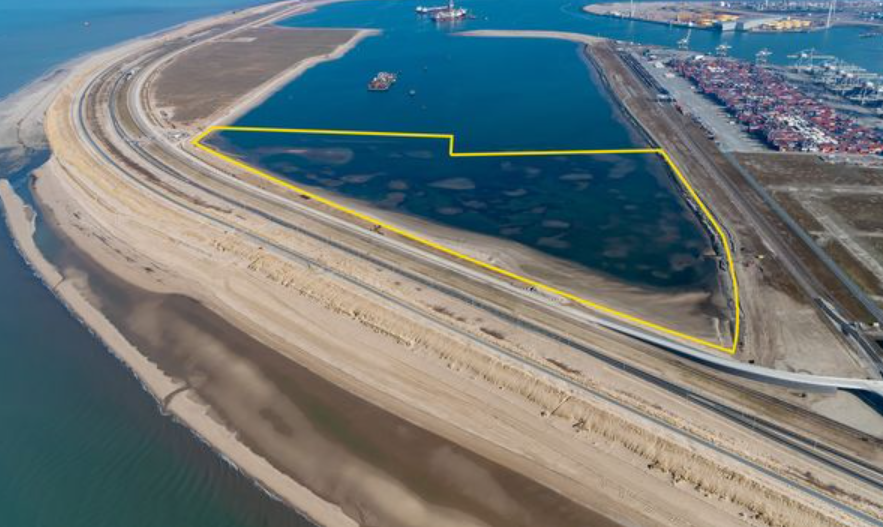The Netherlands – At Maasvlakte 2, 55 hectares of land are being developed for companies producing renewable fuels and chemicals.
Van Oord, a marine engineering firm, has recently begun work on the project. The Port Authority wants to make space available to other companies that make products from residual materials because UPM, a Finnish company, is planning to set up shop here. Concentrating these types of businesses creates a cluster of businesses that can share infrastructure, such as pipelines.
A total of 5 million m3 of sand is being delivered by Van Oord to the southern part of Prinses Alexiahaven. This section of Maasvlakte 2 had not yet been raised in anticipation of specific plans for the area. The new land will be raised to a height of six metres above the water level in New Amsterdam (NAP). The work is expected to be finished in July, according to Van Oord. After that, the sand must settle for six months before it can be built on. On top of that, a layer of clay will be applied, and grass will be sown to keep the sand from blowing away.
Transition strategy
The site’s preparation came as a result of the Finnish company UPM’s recent announcement that it is now only considering Rotterdam as a location for its new biorefinery. As a result, it may be the first company in a new cluster dedicated to the production of renewable fuels and chemicals. This cluster’s site is expected to be about 90 hectares in size. UPM is unlikely to make a decision on the new plant before the end of the year.
The Port Authority treats the port area with extreme caution. There is still room at Maasvlakte 2 to expand container handling and activities that align with the port’s transition strategy, such as green hydrogen production, offshore wind power landings, and renewable fuel production. There is space available elsewhere in the port area, but it is mostly for smaller events. In addition, various locations will be redeveloped over time.





